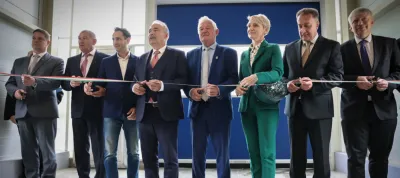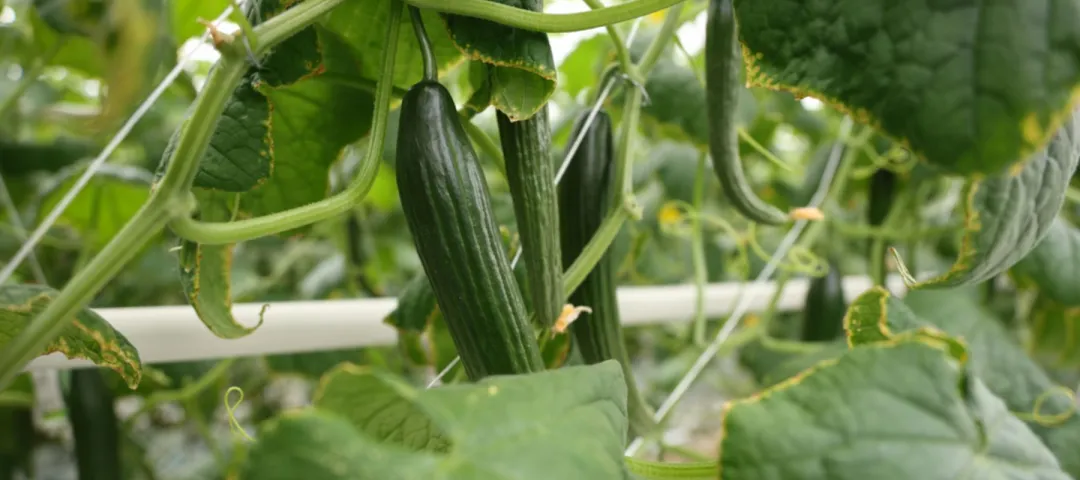General information
RDP Priority
- P2. Competitiveness
RDP Focus Area
- 2A: Farm’s performance, restructuring & modernisation
RDP Measure
- M04: Investments in physical assets
Beneficiary type
- Small-Micro Enterprise
Summary
La coopérative GreenCoop est le premier et le seul groupe international transfrontalier de producteurs en Slovaquie et en Hongrie. Ses membres sont des producteurs dont la philosophie consiste à cultiver des tomates et des concombres savoureux et sains avec la plus faible empreinte écologique possible.
Le membre hongrois de la coopérative, Ácsi Thermal-Horticulture Ltd., est impliqué dans la culture hydroponique depuis plus de 15 ans et, grâce à cet investissement, a pu construire une serre de 6,5 hectares, un bâtiment administratif et un hall d'emballage (4 500 m2), équipés de toutes les machines et de tous les équipements nécessaires.
Results
- Grâce à cet investissement, la coopérative dispose désormais d'un total de six serres sur 31,5 hectares, dans lesquelles sont cultivés des tomates et des concombres.
- La nouvelle serre dédiée à la culture des concombres produit au total 12 millions de concombres serpent par an.
- Cet investissement a permis de créer 80 emplois permanents et de nombreux emplois saisonniers dans la région.

Promoter
Ácsi Thermal- Horticulture Ltd
Funding
Budget total : 15,0 millions (EUR)
FEADER : 3,6 millions (EUR)
National/régional : 0,9 million (EUR)
Privé/propre : 10,5 millions (EUR)
Ressources
Contexte
La coopérative GreenCoop est un groupe international transfrontalier de producteurs dont la philosophie consiste à cultiver des tomates (et désormais des concombres) savoureuses et saines avec une empreinte écologique aussi faible que possible. Depuis plus de 15 ans, l'organisation est impliquée dans la culture hydroponique de tomates en Slovaquie, où elle est leader du marché avec la plus grande exploitation sous serre du pays. Quelque 10 000 tonnes de tomates sont produites chaque année dans quatre serres réparties sur une superficie totale de 20 hectares. En 2019, un membre hongrois, Ácsi Thermal-Horticulture Ltd., a rejoint la coopérative, qui est ainsi devenue le premier (et toujours le seul) groupement international transfrontalier de producteurs dans la région. Leur serre, située à Győr, dans le nord-ouest de la Hongrie, s'étend sur une superficie de cinq hectares, où 2 000 tonnes de tomates sont produites chaque année.
Dans l'ensemble de la coopérative, les serres ultramodernes, cultivées avec des technologies néerlandaises, n'utilisent que des produits phytosanitaires biologiques, l'énergie géothermique pour le chauffage et l'eau de pluie pour l'irrigation. Grâce à cela, la coopérative produit 15 000 tonnes de dioxyde de carbone en moins par rapport aux producteurs traditionnels de serres de taille similaire. Elle parvient ainsi à garantir que la culture de ses légumes n'a pas d'impact négatif sur l'environnement. La région de Csallóköz en Slovaquie et celle de Kisalföld en Hongrie sont toutes deux réputées pour leurs conditions climatiques favorables à la production de légumes, avec une eau de bonne qualité pour l'irrigation et jusqu'à 2 000 heures d'ensoleillement par an. Afin d'obtenir les meilleures saveurs, les variétés sont soigneusement sélectionnées et testées pendant au moins un an. De plus, comme les producteurs souhaitent préserver le goût authentique des tomates, ils n'utilisent pas d'éclairage artificiel. Ainsi, leurs « tomates joyeuses » ne sont disponibles en magasin que de fin février à novembre.
En 2024, Ácsi Thermal-Horticulture Ltd. a augmenté la superficie de ses serres à 31,5 hectares, en ouvrant une nouvelle serre de 6,5 hectares dans laquelle seuls des concombres serpent sont cultivés.
Objectifs
Cet investissement visait à accroître la part de marché de la coopérative, à créer de nouveaux emplois et à augmenter les revenus en élargissant la gamme de légumes produits.
Activités
La construction a débuté en février 2023 et s'est achevée en février 2024, la première récolte de concombres ayant eu lieu dès avril 2024. La construction a été réalisée sous forme d'investissement en terrain vierge et, outre la serre de 6,5 hectares, un bâtiment administratif et une salle d'emballage (4 500 m2) ont été construits, avec l'achat de toutes les machines et équipements requis. Des technologies néerlandaises sont utilisées pour la culture, et des machines de plusieurs fabricants européens ont été achetées pour le tri et l'emballage.
Pour un investissement total de 6 milliards de HUF, une aide de la PAC de 1,8 milliard de HUF a été obtenue, qui a été consacrée à la construction de la serre, à la rénovation du puits, aux travaux à l'intérieur de la serre, à la mécanisation et à la construction du hall d'emballage.
Principaux résultats
- La nouvelle serre fonctionne avec des technologies néerlandaises modernes, similaires à celle des cinq autres serres. Elle utilise également la protection biologique des végétaux, l'énergie géothermique pour le chauffage et des panneaux photovoltaïques pour produire l'énergie nécessaire. L'irrigation est assurée par l'eau de pluie collectée, ce qui permet de couvrir 98 % des besoins énergétiques de la serre à partir de sources renouvelables.
- La nouvelle serre de culture de concombres est plantée deux fois par an. Au total, environ 335 500 plants sont mis en terre, ce qui permet de récolter 12 millions de concombres serpent par an.
- L'ouverture de la serre a permis de créer 80 nouveaux emplois permanents dans la région, et des dizaines d'autres travailleurs saisonniers sont employés pendant la saison des récoltes.
Principaux enseignements
- Le système de demande d'aide au titre de la PAC fonctionne assez bien en Hongrie, et l'entreprise a déjà une bonne expérience en la matière. Cependant, la bureaucratie reste importante et les délais d'obtention des autorisations peuvent être très longs. Par conséquent, la mise en œuvre d'un projet peut prendre des années.
- Il a été assez difficile de trouver la main-d'œuvre nécessaire. La culture des concombres exige un travail intensif et la récolte doit être effectuée six jours par semaine. Cela peut être pénible pour les employés. Au début, beaucoup de personnes ont quitté leur emploi après peu de temps, ce qui était prévisible, mais l'équipe s'est rapidement stabilisée et, actuellement, l'entreprise fonctionne de telle manière que, pendant les périodes de forte activité, son personnel est complété par des travailleurs temporaires de différentes nationalités.
Nous sommes des producteurs qui aimons cultiver des plantes et qui avons décidé de perpétuer les traditions de nos ancêtres. Nous sommes guidés par une conviction profonde, selon laquelle “le client doit toujours recevoir des aliments sûrs, de la meilleure qualité et les plus savoureux”.
Imre Balogh

